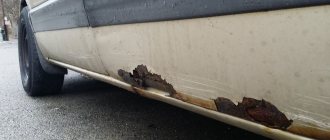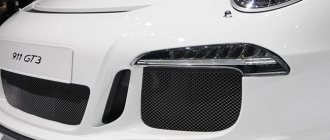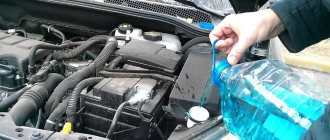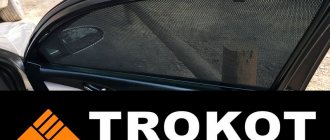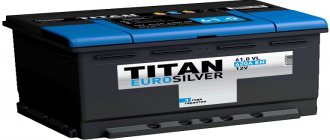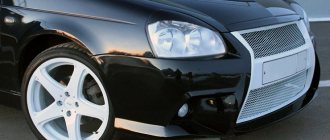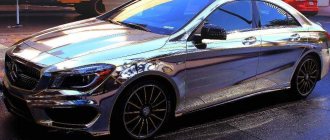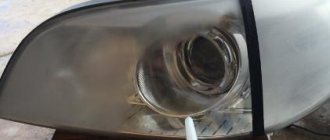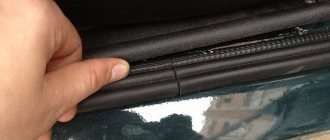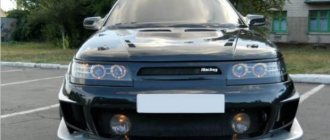Corrosion is the most common cause of deterioration of the metal surfaces of your car. The product of the corrosion process is rust - iron oxide. Metal corrosion does not stop for a second - it begins at the moment the car is born and spreads throughout the body and bottom, which will invariably render the car unusable if nothing is done about it. Electrochemical protection of a car against corrosion is one of the best options to protect your car from rust.
How to protect your car
There are three effective methods of electrochemical corrosion protection:
- Passive methods of struggle. The principle is based on isolating the car from the harmful effects of an aggressive environment.
- Active protection method. This is a set of works to protect the metal surfaces of a car.
- Transformative method. Aimed at combating existing rust: removing, burning, modifying rust.
The most effective method is active, and electrochemical protection of the body against corrosion is considered the most promising. There are two methods of protection against electrochemical corrosion:
- cathode method;
- anode method.
The most vulnerable places
Due to its complex design, the body rusts unevenly. The most vulnerable places include:
- Welds. Welding cannot ensure complete sealing of parts, so there are always microcracks in the seams. With constant humidity, it is in the welding areas that primary foci of corrosion form.
- Bottom, wheel arches, niches and sills. These places are constantly faced with mud, sand and rocks. When driving a car at speed, the physical impact becomes very noticeable, so corrosion forms quite quickly.
- Engine and exhaust system. A running engine has a high temperature, which is very different from the ambient temperature. Constant temperature changes also cause corrosion.
- Interior of the body. The interior gets dirty and wet easily even after short trips.
All these places require different protection, since the causes of corrosion are not the same.
Cathodic electrochemical protection
The most popular method is cathodic protection - this method involves shifting the housing potential to the negative side.
The principle of cathodic protection is the passage of current caused by the potential difference between the metal of the car body parts and the environment around it. The more active material is oxidized, the less active is reduced.
Electrical protection is carried out using a device connected to a direct current source - this type is commonly called electronic protection.
To do this, you need an electronic module, which you can purchase or make yourself. It is mounted inside the car and connected to the on-board network.
The protective device should be turned off from time to time, since too strong a potential shift can provoke cracking of the metal - this nuance can be called the only drawback of cathodic protection against corrosion.
Garage storage is a great way to protect
You can protect cars from rust that are stationary in a garage, since it protects the car from negative influences. It is enough to connect the body to one of the metal walls. Using a metal garage as an anode is the simplest and most affordable method of electrochemical protection. If there is no garage, you can also use a ground loop in an open parking lot.
Causes of corrosion
Since the electrochemical method of protecting a car is aimed exclusively against corrosion, the reasons that cause it to damage the body should be considered. The main ones are water and road reagents used during the cold period. When combined with each other, they form a highly concentrated salt solution. In addition, dirt settled on the body retains moisture in the pores for a long time, and if it contains road reagents, it also attracts water molecules from the air.
The situation is aggravated if the car's paintwork has defects, even small ones. In this case, the spread of corrosion will occur very quickly, and even the remaining protective coatings in the form of primer and galvanization may not stop this process. Therefore, it is important not only to constantly clean the car from dirt, but also to monitor the condition of its paintwork. Temperature fluctuations as well as vibrations also play a role in the spread of corrosion.
You should also note the areas of the car that are most susceptible to corrosion. These include:
- parts located closest to the road surface, that is, sills, fenders and underbody;
- welds remaining after repairs, especially if they were carried out incorrectly. This is explained by high-temperature “weakening” of the metal;
- in addition, rust often affects various hidden, poorly ventilated cavities where moisture accumulates and does not dry out for a long time.
We protect the body of your car from corrosion. Description of methods and practical advice.
Sooner or later, every car owner is faced with the need to protect his car from corrosion.
The consequences of an accident, chips in the paint from stones, scratches caused accidentally or intentionally, condensation in the cavities of hard-to-reach parts - all this creates pockets of corrosion. We cannot exclude such an important fact as a manufacturing defect or something that is generally not considered a defect for some reason: the use of materials that are not sufficiently resistant to this process for parts that are obviously exposed to aggressive external influences. It seems quite reasonable that protecting a car from corrosion should begin with work on the design of a future model, fortunately, the risks have long been studied, statistics have been accumulated, the properties of certain materials are known... The only reason why this is not done lies on the surface: it is not profitable for the manufacturer, so that the consumer drives the car for a long time. It is beneficial for the manufacturer that the consumer regularly buys a new car for more and more money.
It is clear that the consumer pursues completely different goals, and therefore protecting the car body from corrosion falls on his shoulders. Why the body comes first is also quite obvious: unlike other parts made from corrosion-resistant alloys (such as the aluminum “bell” of an automatic transmission), the body is made, firstly, of steel, and secondly, steel this one is quite thin, that is, the consequences of corrosion for the body parts are much more serious than, for example, for a thick cardan shaft pipe.
However, it would be unfair to completely deny manufacturers the desire to make a quality product. After all, before a machine reaches the consumer, it will inevitably be subject to a certain number of external influences that it must endure without losing its value. Therefore, many automakers, caring about their reputation, take measures to protect the body against corrosion.
What methods and means exist to combat such “destruction” of the body?
With all the variety of methods, they are based on two principles: creating a barrier impenetrable to aggressive environments, and creating a coating that will interact with the aggressive environment instead of the base metal.
The first type includes paint coatings, lamination and other methods that create a durable protective film on the surface. Separately, it is necessary to note the priming procedure: the primer itself, as a rule, does not protect the base metal, but creates better conditions for the protective coating to adhere to it. True, there is a phosphating method, the meaning of which is to apply a special primer that forms a phosphate film on the surface. This film has a dual function: it improves the adhesion of paint to the part, and to some extent protects the part itself. The second type includes methods that can be combined under the general name “electrochemical”, and the most common of them, used in manufacturing plants, is galvanizing body The housing part is immersed in molten zinc, which covers its surface with a continuous layer 1-2 microns thick. Zinc, as a more electronegative metal than iron, “takes” the brunt of the elements. However, due to the presence of micropores in such a coating that are accessible to moisture, its service life rarely exceeds 1 year, so for older machines, galvanization produced at the factory, contrary to popular belief, is not a panacea. However, now there is (and is already being successfully used by some manufacturers) cataphoretic deposition technology, which makes it possible to increase the thickness of the zinc coating to 6-9 microns, and its service life to 10-12 years. A certain weak artisanal resemblance to this method is the so-called cathodic protection. The role of the cathode here is the steel body of the car, and the role of the so-called “sacrificial anode” is a plate made of a protector metal that is more active than steel. It can be chromium, magnesium, aluminum, but the most common is again zinc. A metal protector plate is attached to the body and when moisture gets in, it “intercepts” it, protecting the base metal. The disadvantage of this method is that to attach the protective plate it is necessary to drill an extra hole, and also that it is extremely difficult to select a zinc plate that covers all parts susceptible to corrosion. The second method of organizing cathodic protection is to use an external direct current source (cathodic protection station) , and all methods colloquially called “electrical” and “electronic” are based precisely on this principle. The disadvantage of this method is the possible occurrence of an overprotection effect, during which hydrogen is released, the composition of the near-electrode layer changes, and other processes occur that accelerate the corrosion of the protected object or external objects in contact with it. But in general, the method is well suited for protecting hard-to-reach places, including along the bottom of the case.
How to choose the most suitable method of protection?
You need to start by defining the protected area.
Barrier methods
For external surfaces - doors, fenders, roof, hood - application of paint and varnish coatings (LPC) over factory paint is suitable. Now, in addition to surface varnishing, other methods of protection are used, for example, lamination .
The procedure is extremely similar to the action of the same name to which, for example, driver’s licenses are subjected.
Its essence is to apply a transparent polymer coating in the form of a film to the surface. And if in the case of varnishing a film is formed directly on the surface during the process of applying varnish, then in lamination ready-made films are used. This film is invisible on the surface, has good resistance to abrasion, exposure to aggressive substances, and is even suitable for masking minor paint defects. In addition, it has excellent adhesion to the base and does not deteriorate its properties at either low or high temperatures. This coating also has disadvantages: it is not applied to contaminated surfaces, does not stop the corrosion process that has already begun underneath it, and is quite expensive. However, if we approach the issue from the standpoint of preserving the presentation of the car for the purpose of resale in the foreseeable future, then lamination is an ideal option for external, visible surfaces. It should be noted here that there are films, the use of which creates the effect of a matte surface, films that allow you to slightly change the color of the original paint and other delights aimed at increasing aesthetic appeal. Plastic linings .
Of course, they protect the main part of the surface of the part, but to attach them it is necessary to drill holes that require separate protection - using mastics or similar preparations. The disadvantage of plastic linings is that they are not designed for constant removal/installation to monitor the presence of pockets of corrosion under the lining. It is difficult for the eye to penetrate there, and water, as you know, will always find a hole... However, there is a very important area where overlays are certainly justified. They are used exclusively in combination with mastics or other methods - the place is very exposed to a wide variety of external influences. We are talking about wheel arches, where pebbles fly from under the wheels, abrasive dirt, and in winter - snow porridge with an aggressive de-icing agent. In these places, plastic fender liners are installed on top of the mastic coating (often at the factory), which significantly reduce damage to the metal of the body.
For hard-to-reach cavities (for example, the surface inside a door),
liquid flowing preparations , which, perfectly complementing factory galvanization, will permanently relieve you of the headache of corrosion of these parts due to the formation of condensation in the cavity. These products may have different names, but they have common properties: they all have an anti-corrosion effect and have a consistency when applied that is much more liquid than conventional mastics.
Why additionally process the body if it is done at the factory?
Many motorists believe that only old cars with impressive mileage are susceptible to corrosion, and new cars do not need additional anti-corrosion treatment. In reality, this is far from the case, since the manufacturer's treatment is rather designed to protect the car from manufacturing defects.
In real conditions, the car is constantly exposed to aggressive factors: high humidity, chemicals on the roads, and even acid rain.
The manufacturer rarely takes into account the influence of such conditions, and the quality of factory processing is not always at an acceptable level.
Anti-corrosion treated bottom
Many cars are galvanized during production, however, this measure is also not a panacea for corrosion. The thickness of the zinc layer is very small, so various mechanical damage and vibration loads easily destroy it.
Barrier methods
Often, corrosion forms in specific areas that frequently come into contact with water or experience physical damage. Such places can simply be covered with mechanical barriers, which will significantly slow down the rate of its occurrence.
As a rule, the barriers are:
- Special primers and mastics that carefully cover the surface of the body.
- Plastic linings. Typically, special fender liners are installed on the wheel arches, the sills and the bottom of the doors are covered with body kits, and there are also plastic elements or leatherette linings on the front and rear edges of the hood.
- Lamination. The use of film made from vinyl or polyurethane. The body, covered with film, is reliably protected from stones, various minor damage, exposure to the sun and moisture.
Typically, motorists combine several methods of barrier protection.
Application of anti-corrosion coating
Rules for gutting and cutting pike
The pike is gutted and cut after cleaning the scales.
How to properly cut pike into cutlets:
The belly of the fish is cut open and the entrails are pulled out.
It is important not to damage the bile, otherwise the product may be spoiled. The esophagus is removed along with the gills, leaving the head
The white film running along the belly (also known as the swim bladder) is removed. The head is cut off with a knife.
After that, they move on to cutting up the carcass itself. This procedure will vary depending on what you plan to cook: minced, filleted, whole pieces or stuffed fish.
For minced meat
If you plan to prepare minced meat for cutlets, only large bones (spine) are removed. The vertebral column of the pike is strong and hard. If the pike is small, then the spine does not need to be removed.
Cutting medium and large pike for minced meat involves the following steps:
- The fish is placed on a cutting board.
- The knife blade is placed parallel to the spine (in the place where the head was) and the fillet is cut to the tail. The knife should be held as close to the ridge as possible.
- In the same way, cut the fillet from the other side of the fish.
- The middle part with the spine is removed; it will be useful for preparing fish soup.
- The pike for cutlets is deboned, but not thoroughly, because... During the process of grinding meat into minced meat, the bones crumble and are not felt in the finished cutlets. The fillet is scrolled in a meat grinder through a fine grill. To better grind the seeds, this can be done twice.
For frying fillets
There are many bones in the pike's body, among them there are massive (spine), medium and very thin. There are a lot of seeds and it is difficult to remove them.
The boneless product is prepared in the following order:
- The fillet is cut along the entire length of the carcass.
- The pike is turned over and the fillet is cut off on the other side.
- The remaining ridge and tail section are cut into pieces and set aside.
- The ribs are cut from the fillet. They are very thin; if the knife is sharp, there will be no significant loss of product.
- Fins are cut out.
- The flesh with the bones is felt above the rib line and two parallel cuts are made along the fillet.
- The strip with bones is separated with a knife and cut out of the fillet.
- The remaining bones are removed with tweezers. A layer of boneless fish pulp is obtained.
- The skin is removed from the fish.
- The fillet is cut into portions and the dish is prepared according to the chosen recipe.
For frying in pieces
Preparation for frying in pieces does not take much time.
The carcass is processed as follows.
- The fins are cut off from the pike.
- The tail is cut off.
- Cut the fish into pieces 1.5-2 cm thick. If you plan to bake the pike in the oven, the length of the pieces can reach 10-15 cm.
- If the pike is large, the pieces are cut randomly to make it convenient to place them in the pan.
For stuffing
Stuffed pike (with and without head) is prepared in the oven. Medium-sized fish are suitable for this dish.
Cutting steps:
- An incision is made around the pike head.
- The skin along with the fins is removed from the carcass using a knife and scissors. To ensure that the skin is easily removed, the carcass is beaten with a rolling pin.
- The pike meat is cut off (and picked by hand) from the remaining part of the carcass. All that remains is the skeleton of the fish.
- Prepare minced meat for filling using fillet, vegetables, herbs, meat, eggs, and other ingredients.
- The removed skin is stuffed with minced meat, and the abdomen is sewn up. The dish is prepared in the oven.
What devices are used
Despite the widespread use of the method of cathodic protection of metal structures in major industries (energy, pipelines, shipbuilding), devices intended for passenger cars are poorly represented in the Russian-language sector of the network. The few that can be found are difficult to verify through tests and reviews, since sellers do not provide a sufficient set of data. The cathodic protection device for cars is represented by the models RustStop-5, BOR-1, AKS-3, UZK-A.
Patented in the USA and Canada, the FINAL COAT device operates on the principle of pulsed current and is accompanied by research data. According to tests, this device showed real effectiveness in protecting steel body surfaces at a potential difference of 100-200 mV by more than 400% than the control sample. The only thing stopping us is the price of the device, which can now be bought for 25 thousand rubles.
